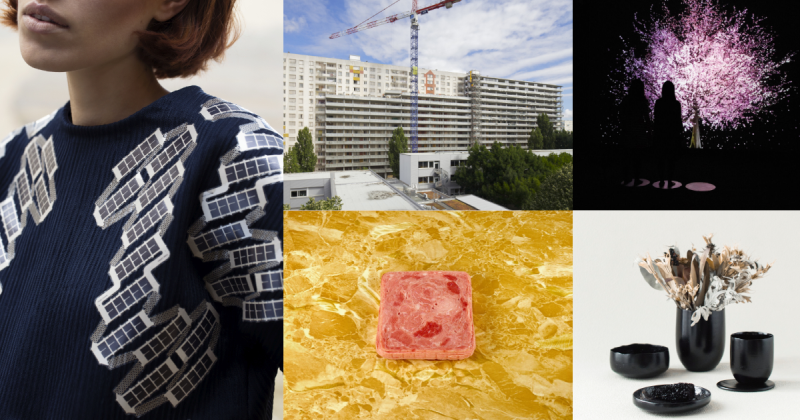5 New Architecture & Design Exhibitions for September 2022
In September 1839 Henry David Thoreau and his brother John spent two weeks navigating the Concord and Merrimack rivers on the Massachusetts/New Hampshire border. A boat trip, a journey, motivated by Thoreau’s long time observation of the Concord river, and for all its many organic and inorganic inhabitants, floating past him, “fulfilling their fate” as they did; and which inspired Thoreau to “launch myself on its bosom and float wither it would bear me.”1
Which is not only a very positive attitude to life, but also to approaching an architecture and/or design exhibition: launch yourself at it and see whither it bears you.
Our five recommendations for allowing yourself to carried off to pastures unknown, and possibly fulfilling fate as you are, in September 2022 can be found in Frankfurt, Hornu, Kolding, Rotterdam and Los Angeles…….
“Adaptive Architecture. Building Upon the Existing” at the Deutsches Architekturmuseum, Frankfurt, Germany
In recent decades it has become blithely accepted that when a building is no longer required it is demolished and a new one built in its place, it’s how our built environments develop, and how architects achieve fame and fortune; however, of late an increasing number of individuals, including some architects, have began asking whether recycling isn’t the better form of development. If reusing, repurposing, an existing building, a building which while structurally sound is either no longer required for, or inefficient in the execution of, its current function, isn’t preferable, better, than throwing it away.
Better not just in context of the ecological balance as compared to that of the build-demolish-repeat cycle, but also in context of the economic balance and the social balance.
Partly against the background of the ongoing renovations and remodelling of their own home on Frankfurt’s Schaumainkai, and partly on account of the relevance and contemporaneousness of the subjects involved, the Deutsches Architekturmuseum decided to undertake a survey of international architecture and, and not unimportantly, urban planning, projects in which the existing is maintained and adapted and transformed.
The result is Adaptive Architecture an exhibition which in the course of its six chapters should not only allow for broader discussions on the husbandry of the fabric of our built environments, and possible futures for our towns and cities, nor only on the impacts of urban planning and architecture beyond the purely physical, but should also enable a wider discourse on the role and function of architects in the development of our towns and cities.
Adaptive Architecture. Building Upon the Existing is scheduled to open at the Deutsches Architekturmuseum, DAM Ostend, Henschelstr. 18, 60314 Frankfurt on Friday September 16th and run until Sunday January 15th. Further details can be found at https://dam-online.de
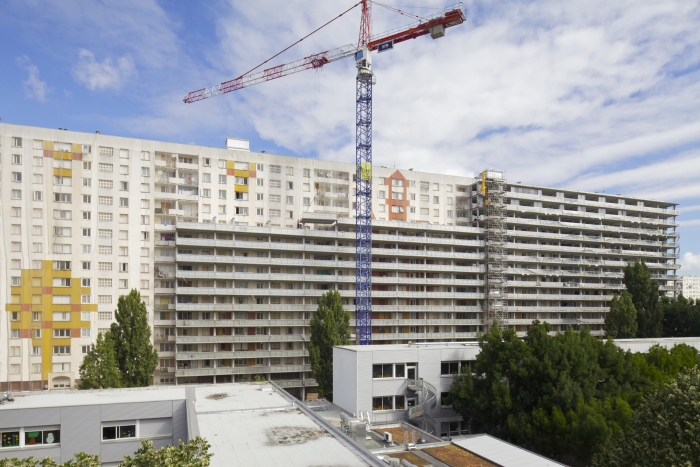
Cité du Grand Parc, Bordeaux by Lacaton & Vassal Architectes, Frédéric Druot Architecture & Christophe Hutin Architecture, part of Adaptive Architecture. Building Upon the Existing, Deutsches Architekturmuseum, Frankfurt (Photo Philippe Ruault, courtesy Deutsches Architekturmuseum)
“At the coalface! Design in a post-carbon age” at CID – centre d’innovation et de design au Grand-Hornu, Hornu, Belgium
The building ensemble that is home to CID Grand Hornu was once a coal mine, one of a great many coal mines that were once the main industry in the region of south-west Belgium in which Hornu stands. Thus CID Grand Hornu is in itself an interesting example and case study of both “Adaptive Architecture” and life in a post-coal age.
And thus an apposite location for an exploration of coal and our relationships with coal past, present and future.
An exploration to be undertaken in At the coalface! in the course of 10 chapters which promise to approach coal as a physical, cultural, economic, social, political, geological et al entity via projects by an international roster of artists, designers, crafters and architects, including, and amongst many others Maarten Baas, Luke Fuller, Philipp Weber or Kosuke Araki.
An exploration which should enable differentiated reflections on not just coal, and the contributions, positive and negative, of coal to contemporary society, but also on the myriad ways we use, exploit, our planet for our own ends and the consequences, positive and negative, of that use, that exploitation.
An exploration which should allow for alternative perspectives on relationships between design and nature beyond the emulative explored in Mimesis. A Living Design at the Centre Pompidou-Metz.
And an exploration which should also allow for insights into how design and designers can, could, ¿will? help global society as we move, as we must, not just away from coal, but from carbonaceous materials of all ilks.
At the coalface! Design in a post-carbon age is scheduled to open at CID – centre for innovation and design au Grand-Hornu, Site du Grand-Hornu, Rue Sainte-Louise 82, 7301 Hornu on Sunday September 25th and run until Sunday January 8th. Further details can be found at www.cid-grand-hornu.be
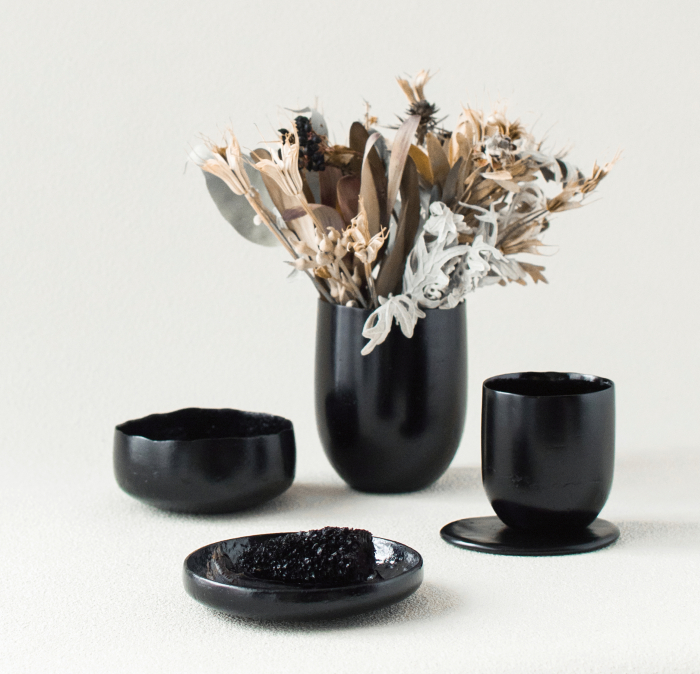
Anima by Kosuke Araki, part of At the coalface! Design in a post-carbon age, CID – centre d’innovation et de design au Grand-Hornu, Hornu (photo courtesy CID Grand Hornu)
“Connect Me” at Trapholt, Kolding, Denmark
In many regards the key to any structure is connections: be it a plant, a rock, a chair, a rice cooker, a mouse, a mouse, a commercial venture, a whatever, form may or may not follow function, but without connections the form would be that of a disorganised heap in a space to which it has no relationship. And very much non-functional.
Similarly ourselves, we are all essentially a composite of connections, internal and external. Yet how often do we consider our personal, internal and external, connections? Save obviously the strength of that to the internet.
Promising a presentation of art works and projects by international artists across a range of genres, Connect Me aims to explore, and provide space for, reflection and discussion on the manifold, and ever changing and developing, connections between ourselves and both the natural and the manufactured worlds around us, the natural and the manufactured worlds in which and through which we both exist and identify ourselves, individually and collectively. And also on the nature and basis of connections between ourselves and the many other ourselves with whom we share, but not always equitably and respectfully, our planet.
And which thereby should not only allow for differentiated considerations on the function and relevance and importance of connections, relationships, correspondences in and for humans and human society, and on why we should consider them more often than we currently do, but should also help elucidate that not only are we individually connected to the worlds around us in a myriad ways, but we are all inter-connected. Something else we all all too often forget, all too infrequently reflect upon.
And because it’s Trapholt you know Connect Me is going to be large: 1,200 m2. Which is an awful lot of space in which to lose contact with your existing self, and thereby to reflect more earnestly on where and why and how you are also connected.
Connect Me is scheduled to open at Trapholt, Æblehaven 23, 6000 Kolding on Saturday September 24th and run until Sunday August 13th. Further details can be found at https://trapholt.dk
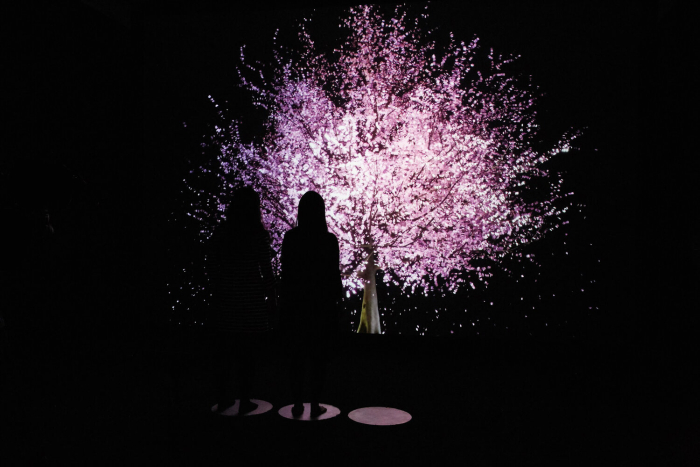
Blooming by Lisa Park, part of Connect Me, Trapholt, Kolding (photo © Lisa Park, courtesy Trapholt Kolding)
“The Energy Show – Sun, Solar and Human Power” at Het Nieuwe Instituut, Rotterdam, Netherlands
Energy is inarguably one of the main themes in Europe this late summer/early autumn, and is likely to remain so for a while, not just in terms of meeting our immediate needs, but also in terms of our long term energy provision and the construction of energy supply systems that are not only secure and stable, but socially, economically and environmentally sustainable and justifiable.
Energy is also, lest we here in Europe forget, one of the more important global themes, and that again, primarily, in context of ensuring a global energy provision that is not only secure and stable, but socially, economically and environmentally sustainable and justifiable. And also fair. A lot fairer than it currently is.
Energy futures in which solar power could, possibly, play an ever greater role.
Curated by Matylda Krzykowski The Energy Show – Sun, Solar and Human Power promises to take the visitor on a chronological journey through historic, contemporary and (speculative) future projects related to solar power, solar energy, the sun, by a wide variety of creatives working in a wide variety of genres, and which thereby should help elucidate the changing, evolving, nature of our relationships with solar power, and the changing, evolving, place of solar power in global society past, present and, potentially most importantly, future. The changing, evolving, status and relevance of that which Orchestral Manoeuvres in the Dark famously referred to as “the final source of energy”, the only alternative they saw in 1979 for powering our societies. An opinion many are only now catching up with.
And in doing so The Energy Show should also, and not unimportantly, provide space for reflections on our own individual and collective relationships with energy of all sorts; for lest we forget, and which again we learn from OMD, the only genuinely future proof energy strategy is the one that involves us all, individually and collectively, using an awful lot less than we currently do. A process that starts with honest reflection on the whats, whys and wherefores of our energy use and the alternatives.
In which context, The Energy Show – Sun, Solar and Human Power is also part of, is the central exhibition of, Rotterdam’s Solar Biennale, a new platform initiated by Marjan van Aubel and Pauline van Dongen and which promises a wide range of exhibitions, workshops, talks and interventions related to solar power and solar energy and global society in the course of September and October, and which thus should allow ample further impetuses for that reflection.
The Energy Show – Sun, Solar and Human Power is scheduled to open at Het Nieuwe Instituut, Museumpark 25, 3015CB Rotterdam on Saturday September 3rd and run until Sunday March 5th. Further details can be found at https://hetnieuweinstituut.nl
The Solar Biennale is scheduled to run at locations throughout Rotterdam from Friday September 9th until Sunday October 30th. Further details can be found at https://thesolarbiennale.com
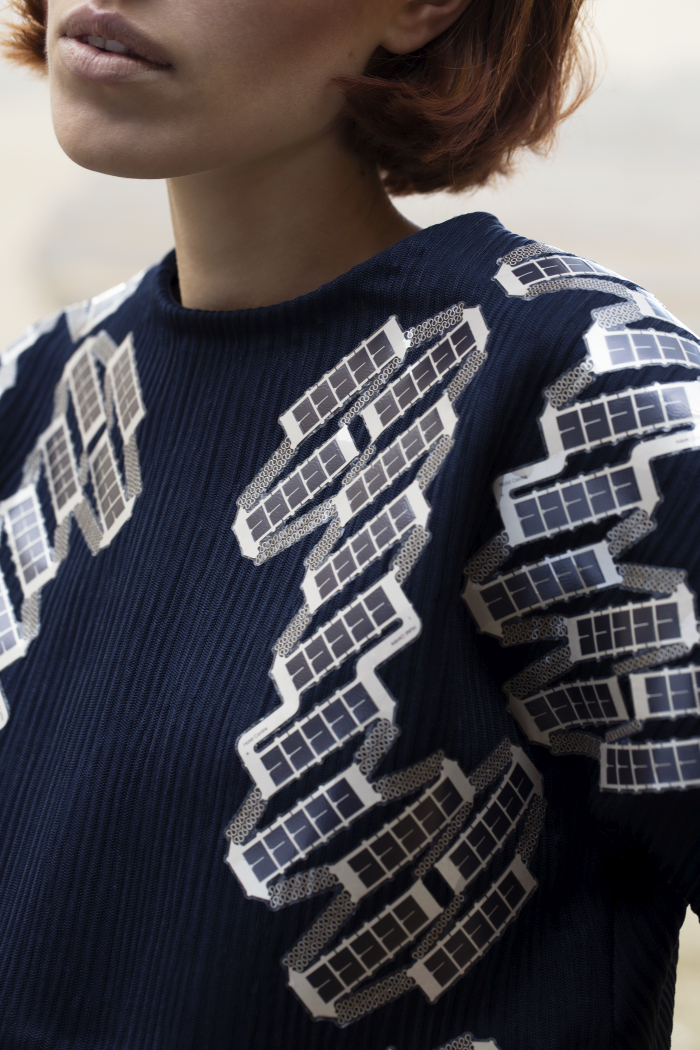
Solar Shirt by Pauline van Dongen, part of The Energy Show – Sun, Solar and Human Power, Het Nieuwe Instituut, Rotterdam (photo Liselotte Fleur, courtesy Het Nieuwe Instituut)
“Objects of Desire: Photography and the Language of Advertising” at Los Angeles County Museum of Art, Los Angeles, California, USA
One of the more popularly overlooked aspects of the social, cultural, economic et al developments of the early 20th century is the ever increasing dissemination of photography; what had once been the preserve of a wealthy, or lucky, few became, in the course of the early 20th century, increasingly affordable and accessible for all. And was taken up with gusto by the youthful avant-garde as a new form of both artistic expression and also of documentation of daily life. And also increasingly became a new medium for commerce: the development in the course of the 20th century of advertising photography as a distinct genre being, unequivocally, linked with, a driver of, the development of industrial consumerism.
A development that means in our contemporary, digital, age it is neigh on impossible to get through a day without consuming innumerable carefully styled and expensively post-produced photos hoping to sell you a dream you’ll happily spend money seeking to achieve. Carefully styled and expensively post-produced photos which seek to communicate with us via vocabularies we’ve become conditioned to understand.
With Objects of Desire Los Angeles County Museum of Art, LACMA, aim to explore how artists and artistic photographers appropriate and adapt and corrupt the carefully managed vocabularies and formats of commercial, advertising, photography, for their own ends, contorting the messages delivered by familiar language for the purpose of comment, criticism, campaigning, crusading rather than commerce, and in doing so not only expanding and developing artistic photography as a creative genre but also enabling artistic photography to maintain and retain its relevance in and to contemporary society.
And thus Objects of Desire should not only provide space for reflection on the development of photography over the century past, nor only help enable a critical questioning of our relationships with visual images, but also help elucidate the relationships between culture and commerce, the inter-play between culture and commerce in the development of contemporary societies.
And also help underscore that how we view things is important and therefore the necessity of understanding and reflecting on that how. Something not unimportant in our contemporary, and in all probability ever increasingly so, world of rapidly consumed political and commercial and social visual messages.
Objects of Desire: Photography and the Language of Advertising is scheduled to open at Los Angeles County Museum of Art, 5905 Wilshire Blvd., Los Angeles, CA 90036 on Sunday September 4th and run until Sunday December 18th. Further details can be found at www.lacma.org
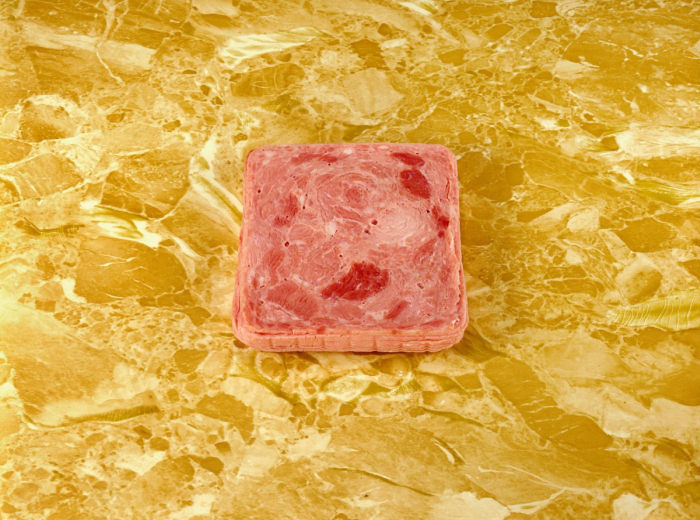
Luncheon Meat on a Counter by Sandy Skoglund, part of Objects of Desire: Photography and the Language of Advertising, Los Angeles County Museum of Art, Los Angeles (photo © Sandy Skoglund, courtesy of Sandy Skoglund and Los Angeles County Museum of Art)
1. Henry David Thoreau, A Week on the Concord and Merrimack Rivers, in Henry David Thoreau, Walden and Other Writings, Bantam Classics, 2004
Tagged with: Adaptive Architecture, At the coalface, CID - centre d'innovation et de design, Connect Me, DAM, Deutsches Architekturmuseum, Frankfurt, Grand-Hornu, Het Nieuwe Instituut, Hornu, Kolding, LACMA, Los Angeles, Los Angeles County Museum of Art, Marjan van Aubel, Objects of Desire, Pauline van Dongen, Rotterdam, Solar and Human Power, Solar Biennale, The Energy Show – Sun, Trapholt Museum
